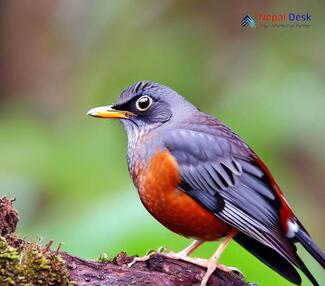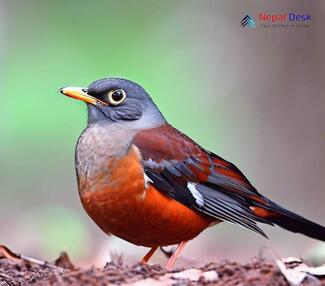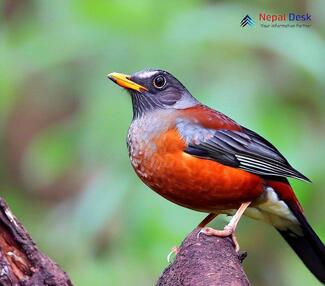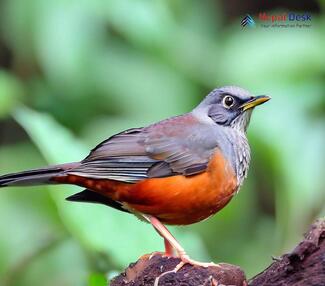Nestled within the breathtaking landscapes of Nepal, amidst diverse habitats and exceptional biodiversity, resides one of the most beautiful avian residents – the Chestnut Thrush (Turdus rubrocanus). This unique and captivating bird species may not be a household name to many, but it is nonetheless an essential component of Nepal's vibrant ecosystem. Let us delve into the world of the Chestnut Thrush and learn about its fascinating characteristics, habitat, and presence in the picturesque land of Nepal.
The Allure of the Chestnut Thrush
The Chestnut Thrush is a spectacular sight with its striking appearance. Males display a rich chestnut-brown plumage on their head, back, and wings, accompanied by a contrasting black face mask. Females are somewhat subtler in coloration yet still possess an undeniable charm with their greyish-brown feathers. Both sexes exhibit creamy-white underparts adorned with dark brown spots, resulting in an overall dazzling impression.
Measuring around 28 cm in length, these birds are not only visually appealing but are also admired for their melodic song. During the breeding season, male individuals sing enchanting tunes that resonate through the thick forest canopies they call home.
A Haven for These Feathered Beauties
Chestnut Thrushes dwell mainly in the montane and subtropical forests of Nepal, primarily between 2,500 and 3,800 meters above sea level. They favor dense understory and woodland edges where they flit among branches in search of nourishment like insects, berries, or seeds. In Nepal's lush wilderness, these birds can often be spotted in places such as Sagarmatha National Park or Shivapuri-Nagarjun National Park.
Migration Patterns and Breeding Behavior
During harsh winter months, the Chestnut Thrush embarks on migratory endeavors, descending to lower elevations for milder climates and plentiful food sources. They often venture as far as India or Bangladesh in search of warmth and sustenance.
When the warmth of spring returns, these birds head back to Nepal's higher altitudes to breed. Chestnut Thrushes build cup-shaped nests from grass stems, moss, and twigs, which are typically situated in forks of tree branches several meters above the ground. Females lay between two and four speckled blue eggs per brood and are solely responsible for incubation.
The Need for Conservation
Like many other bird species in Nepal, the Chestnut Thrush faces various challenges ranging from habitat loss due to deforestation or climate change. There is an urgent need to adopt conservation measures that protect both their habitats and ecosystems to ensure their survival for future generations.
In conclusion, the Chestnut Thrush is a fascinating avian inhabitant in Nepal's rich wilderness. Its striking appearance, enchanting song, and captivating behavior provide even more reasons for nature enthusiasts to explore the dazzling land of Nepal. By understanding and appreciating this bird species' role and significance, we can contribute towards its conservation and thriving presence in Nepal's vast natural landscapes.




